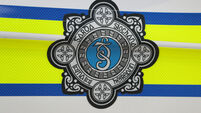Fears over impact of short-haul flights on crews
Concern about the potential impact of commercial pressures being placed on flight crews is contained in a new report by the Department of Transport’s Air Accident Investigation Unit into an emergency on board a Ryanair flight last November.
A failure to switch an important control button into an ‘on’ position resulted in cabin pressure reaching dangerous levels without the flight crew immediately becoming aware of the problem.
The pilot was forced to initiate an emergency descent after a cabin altitude horn sounded shortly after take-off when the plane had reached a cruising height of 32,000ft. Oxygen masks were lowered when cabin pressure went below the required level for the altitude of the plane.
The incident took place on board a Boeing 737 aircraft with 116 passengers and crew shortly after leaving the Spanish airport of Reus on a flight to Dublin on November 8 last.
No injuries were reported, although some cabin crew reported experiencing a sharp pain in their ears.
The AAIU report noted that passengers could only survive for approximately 30-50 seconds without oxygen at the normal cruising height of the flight.
Without proper cabin pressurisation, passengers and crew can show symptoms of hypoxia (oxygen starvation) at a height of 10,000ft.
The AAIU report warned that flight crews operating under a high workload may not recognise the initial symptoms of hypoxia with a corresponding effect on their judgment.
The report noted the pilot on landing at Reus from Dublin had been asked to speed up his departure to facilitate the arrival of another Ryanair aircraft.
Ryanair has accepted an AAIU recommendation that specific checks are conducted on cabin pressurisation levels after all aircraft reach 10,000ft.













